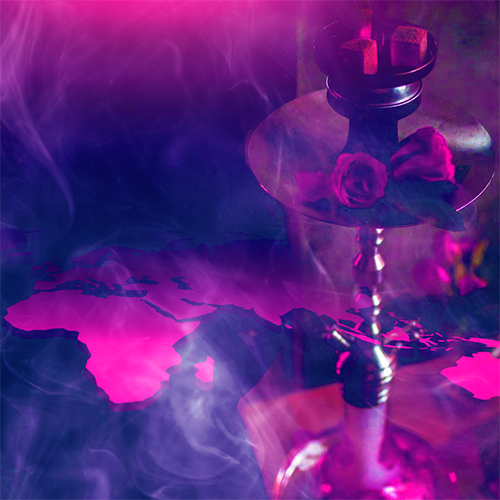
The Hindustani term huqqa (Devanagari:, Nastaleeq: ) is used throughout the Indian subcontinent and is the source of the English word "hookah." The English language's widespread use of the Indian word "hookah" is a product of colonisation in British India (1858-1947), when huge numbers of expatriate Britons first used the water pipe. In his Memoirs, William Hickey wrote shortly after landing in Calcutta, India, in 1775. Watch full video here.
Arabic:, romanized: 'Arjlah', is the most frequent name in Lebanon, Syria, Palestine, Jordan, Uzbekistan, Kuwait, and Iraq, while Nargilah (Hebrew:, Arabic: ) is the most common name in Israel. It is derived from nrgil (Persian: ), which is derived from the Sanskrit word nrikela, which means coconut, implying that early hookahs were carved from coconut shells.
In Albania, the hookah is called "lula" or "lulava". In Romania, it is called narghilea.
In Persia, hookah is called "qalyān" (قلیان). Persian qalyan is included in the earliest European compendium on tobacco, the tobacologia written by Johan Neander and published in Dutch in 1622.
In Uzbekistan and Afghanistan, a hookah is called chillim.
In Kashmir, hookah is called "Jajeer".
In Maldives, hookah is called "Guduguda".
In Germany, Austria and Switzerland, hookah is called "Shisha".
In the Philippines, hookah is called "hitboo" and normally used in smoking flavored marijuana.
The hookah pipe is also known as the "marra pipe" in the UK, especially in the North East, where it is used for recreational purposes.
In Sindhi, another language of South Asia, it is called huqqo.
In Vietnam, hookah is called hookah shisha (bình shisha) and shisha is called "shisha tobacco" (thuốc shisha).